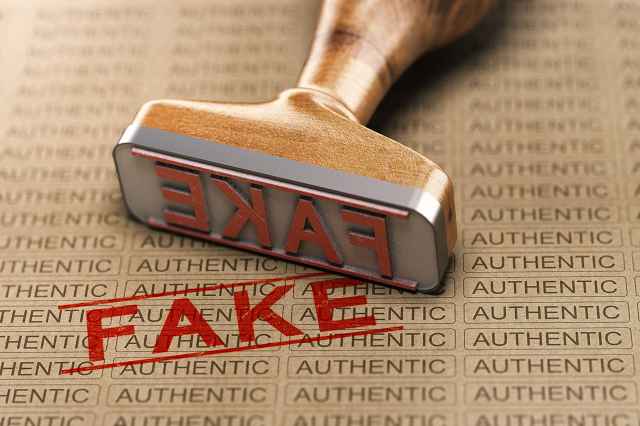
The prevalence of counterfeit and pirated goods across various industries in Vietnam has become a significant challenge, severely impacting consumers, legitimate businesses, and the national economy.
From traditional markets and stores to e-commerce platforms, counterfeit goods are everywhere, and their presence is becoming increasingly sophisticated and challenging to control. This situation raises a critical question: How can Vietnamese goods compete fairly and sustainably with imported products in an environment rife with risks?
Counterfeit goods not only erode consumer trust and cost them money but also endanger their health. They also put legitimate manufacturing businesses in a difficult position. The efforts and investments of Vietnamese enterprises in technology, quality, and brand building can be easily undermined by cheap and attractive counterfeit products that are easily accessible due to their low prices and appealing appearances.
Additionally, the state budget suffers from tax losses and a gradual loss of market control. Market inspection and supervision face limitations due to inadequate manpower and resources, while the production and distribution of counterfeit goods continue to become more sophisticated. The rapid development of e-commerce and social media has also facilitated the spread of counterfeit goods without stringent control.
Furthermore, consumer awareness regarding the importance of using genuine and properly sourced goods remains low. Many consumers are still attracted by low prices, compromising quality.
Vietnamese goods are not lacking, but how can they compete?
In this context, for Vietnamese goods to compete with imports, the primary focus should be on improving product quality and design. Superior quality, reasonable prices, and appealing designs are fundamental to gaining consumers’ long-term trust in Vietnamese products.
Numerous domestic brands have already established their position in the market by delivering quality products and understanding the Vietnamese market.
Modern technology has become a powerful tool for Vietnamese enterprises to bridge the gap with their competitors and combat counterfeiting. In the face of widespread product counterfeiting, electronic anti-counterfeiting labels, QR codes for product traceability, and digital platforms enable customers to easily verify the authenticity and origin of products.
However, the cost equation remains a significant hurdle. As economic expert Phan Dũng Khánh points out, many domestic products are priced higher but offer lower quality than cheap imported goods. In contrast, many online sellers on e-commerce platforms can afford to offer discounts while still paying taxes and making a profit. This disparity stems from differences in cost management, supply chains, production scale, and operational efficiency.
To address this issue, Vietnamese enterprises must improve their management practices, optimize costs, invest in quality, and uphold integrity in production. Relying solely on consumers’ sentimental preference for domestic products is not a sustainable strategy.
In the digital age, consumers have numerous choices and easy access to products. More importantly, consumers are becoming more discerning and responsible in their purchasing decisions. While cheap and untraceable goods used to be popular, there is now a growing preference for quality and health-conscious options. Many young consumers are willing to pay a premium for products with clear and transparent origins, environmental friendliness, and sustainability.
However, it is essential to acknowledge that counterfeiting persists due to the lack of stringent controls on e-commerce platforms and the inadequate handling of commercial fraud.
A comprehensive and robust approach is necessary to curb counterfeiting.
Mr. Nguyễn Quang Huy, CEO of Finance and Banking at Nguyen Trai University, emphasizes the need for a comprehensive and long-term solution to tackle counterfeiting. Strengthening inspections and imposing strict penalties are prerequisites. Authorities must be equipped with enhanced human resources and technological capabilities to conduct regular and surprise checks in hotspots. Severe penalties for individuals and organizations involved in counterfeiting should be enforced and publicized to deter potential violators.
In parallel, adopting anti-counterfeiting technologies is inevitable. From electronic tags and QR codes to blockchain-based or big data-driven product traceability systems, these tools enhance market transparency and consumer trust.
Lastly, widespread awareness campaigns are crucial to educating the community about distinguishing between genuine and counterfeit goods and underscoring the consequences of supporting illicit trade.
Only through coordinated efforts between the government, businesses, and consumers, coupled with concrete and earnest actions, can we gradually cleanse the business environment and lay a solid foundation for Vietnamese goods to thrive.
Additionally, genuine products should be prioritized not only in supermarkets but also on e-commerce platforms, schools, hospitals, and government institutions. Enterprises producing authentic goods should have easier access to financing, tax reductions, and promotional support through national programs.
According to Mr. Phan Dũng Khánh, Vietnamese goods still hold significant advantages, such as a diverse ecosystem, agile adaptability, and an increasing number of honest businesses committed to authenticity and integrity in their operations. The key lies in implementing a coherent policy framework that provides support where needed and addresses violations firmly. While encouraging honest businesses to invest in long-term quality enhancement, strong actions must be taken against deceptive practices and the production of counterfeit and substandard goods. Restoring consumer trust and upholding moral values as market standards are essential for Vietnamese products to truly rise, both domestically and internationally.
Cát Lam
– 08:11 05/06/2025
















